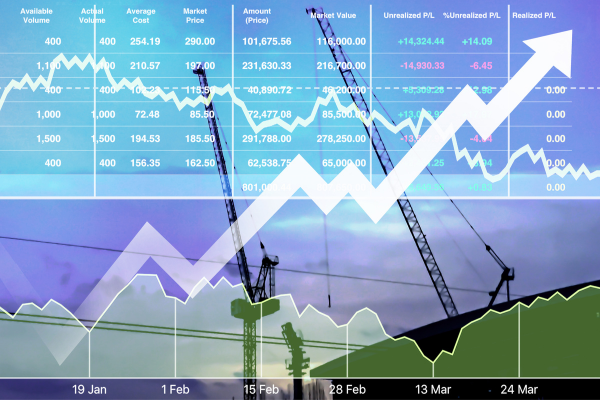Introduction
Financial forecasting software refers to a specialized tool that banks use to predict and analyze future financial outcomes based on historical data, trends, and various external factors. It plays a crucial role in the banking industry as it helps institutions make informed decisions, manage risks effectively, streamline financial operations, and improve overall efficiency.
In the dynamic world of banking, accurate financial forecasting is essential for strategic planning and decision-making. By utilizing advanced algorithms and data analysis techniques, financial forecasting software enables banks to anticipate market trends, identify potential risks, optimize resource allocation, and align their business goals with their financial strategies.
Benefits Of Financial Forecasting Software
Streamlining Financial Operations with Forecasting Software
One of the key benefits of using financial forecasting software in banks is the automation of various financial processes. Traditionally, these processes were time-consuming and prone to manual errors. However, with the implementation of forecasting software systems, banks can automate tasks such as budgeting, cash flow management, revenue projections, expense tracking,and more.
By automating these processes through forecasting software solutions,banks can significantly reduce manual errors that often occur due to human oversight or miscalculations. This not only saves time but also improves accuracy in financial operations.
Furthermore, the use of forecasting software enhances efficiency by streamlining workflows within banking institutions. With automated systems in place, banks can allocate resources more effectively, reducing redundancy, and optimizing productivity across departments.
Improved Accuracy in Financial Projections
Financial projections are critical for banks as they provide insights into future performance, enabling them to make informed decisions regarding investments, capital allocation, and risk management. Forecasting software leverages historical data, trends, and other relevant factors to generate accurate projections for various aspects such as revenue, growth rates, costs, and profitability.
By analyzing past performance patterns, banks can identify trends that may impact future outcomes. For example, a bank may observe a correlation between interest rate fluctuations and loan demand. By incorporating such external factors into their forecasting models, banks can generate more accurate projections, helping them make better-informed decisions.
Moreover, forecasting software enables banks to conduct scenario analysis. This involves simulating different scenarios and assessing their potential impact on financial outcomes. By considering various possibilities, banks can develop robust risk management strategies and make contingency plans to mitigate potential risks.
Enhanced Risk Management
| Metrics | Description |
|---|---|
| Accuracy | The degree to which financial forecasting software predicts future outcomes correctly. |
| Efficiency | The ability of financial forecasting software to quickly and accurately process large amounts of data. |
| Risk Reduction | The extent to which financial forecasting software helps to identify and mitigate potential risks. |
| Flexibility | The ability of financial forecasting software to adapt to changing market conditions and business needs. |
| Integration | The ease with which financial forecasting software can be integrated with other systems and tools. |
Risk management is a critical aspect of banking operations,and financial forecasting software plays a vital role in identifying and mitigating risks effectively. By analyzing historical data,trends,and external factors,forecasting software helps banks identify potential risks that may impact their financial performance.
With the ability to conduct scenario analysis,banks can simulate different risk scenarios and assess their potential impact on key metrics such as profitability,capital adequacy,and liquidity.By understanding the possible outcomes of various risk events,banks can develop proactive strategies to mitigate these risks effectively.
Furthermore,financial forecasting software enables banks to monitor key risk indicators in real-time.This allows for early detection of emerging issues or deviations from expected performance.With timely alerts and notifications,banks can take immediate action to address these issues before they escalate into significant problems.
Increased Efficiency in Budgeting and Planning

Budgeting and planning are crucial processes for banks as they help allocate resources effectively, set targets, and monitor progress towards achieving strategic goals. Traditionally, these processes involved manual data collection, spreadsheet-based calculations, and time-consuming coordination among departments. However, the implementation of financial forecasting software has revolutionized these processes, making them more efficient and accurate.
Forecasting software simplifies budgeting by automating data collection, collaboration among stakeholders, and calculation of key metrics. Bank employees no longer need to spend hours manually gathering data from multiple sources or reconciling spreadsheets. Instead, the system integrates with various banking systems, databases, and other relevant sources, enabling real-time updates and adjustments as needed.
Moreover, forecasting software improves accuracy in budgeting and planning by eliminating human errors that often occur during manual data entry or calculations. With automated systems in place, banks can rely on accurate and up-to-date financial data, ensuring the integrity of their budgets and plans.
Real-Time Monitoring of Financial Performance
In today’s fast-paced banking industry,real-time monitoring of financial performance is crucial for timely decision-making.Forecasting software provides banks with continuous tracking capabilities,enabling them to monitor key metrics such as revenue,costs,profitability,and liquidity in real-time.
By having access to real-time financial data,banks can quickly identify any deviations from expected performance or potential issues that may require immediate attention.For example,a sudden increase in loan delinquencies may indicate a deteriorating credit quality.By detecting such issues early on,banks can take proactive measures to address them before they impact their overall financial health.
Real-time monitoring also enables banks to make informed decisions based on current market conditions and trends.Rather than relying on outdated reports or delayed information, bank executives can access up-to-date data through forecasting software.This empowers them to make timely decisions regarding investments, capital allocation,risk management,and other strategic initiatives.
Better Decision-Making with Accurate Financial Data
Accurate and timely financial data is the foundation for effective decision-making within banking institutions. Forecasting software plays a vital role in providing banks with access to accurate, up-to-date, and comprehensive financial information.
By integrating with various banking systems, databases, and other relevant sources, forecasting software ensures that all necessary financial data is readily available for analysis. This eliminates the need for manual data collection, reconciliation, and consolidation, saving time, enhancing operational efficiency and mitigating potential inaccuracies linked to these operations.
With accurate financial data at their fingertips, bank executives can make better-informed decisions regarding resource allocation, risk management, strategic planning, and other critical areas. By understanding the current state of their finances, the impact of external factors, and future projections, banks can align their business goals with their financial strategies, driving sustainable growth and profitability.
Integration with Other Banking Systems
To maximize the benefits of financial forecasting software, banks need seamless integration with other banking systems such as core banking systems, CRM platforms, and data warehouses. This integration enables efficient data sharing, collaboration among departments, and a holistic view of the bank’s operations.
By integrating forecasting software with core banking systems, banks can access transactional data in real-time. This allows for more accurate revenue projections, cash flow management, and risk assessment. With up-to-date information at hand, banks can make informed decisions regarding lending activities, investment opportunities, and other revenue-generating initiatives.
Integration with CRM platforms enables banks to leverage customer data for better forecasting and decision-making. By analyzing customer behavior, purchase patterns, and market trends, forecasting software helps banks identify potential growth opportunities and tailor adapting their offerings to effectively cater to customer demands.
Furthermore, integration with data warehouses provides banks with a centralized repository of historical and current financial data. This facilitates comprehensive analysis, trend identification, and scenario modeling, enabling banks to generate accurate forecasts and develop robust risk management strategies.
Customizable Reporting and Analysis
Financial forecasting software offers customizable reporting and analysis features that cater to the specific needs of individual banks. These features allow users to generate tailored reports, dashboards, and visualizations based on their unique requirements.
With customizable reporting capabilities, bank executives can focus on key metrics that are most relevant to their strategic objectives. For example, a bank may want to track loan portfolio performance by industry sector or geographic region. By customizing reports accordingly, bank executives gain insights into specific areas of interest, enabling them to make targeted decisions regarding risk management, capital allocation, or product development.
Moreover, the ability to customize analysis allows for deeper insights into financial performance. Trend analysis, variance analysis, sensitivity analysis, and other advanced analytical techniques enable banks to understand the underlying drivers behind their financial outcomes.
By identifying the factors that contribute to success or failure, banks can refine their strategies and improve overall performance.
Customizable reporting and analysis also enhance data visualization, which is crucial for effective communication of financial information. representations such as charts, graphs, and heat maps make complex financial data more accessible and understandable to stakeholders. This facilitates better decision-making, collaboration, and alignment of business goals within banking institutions.
Cost Savings with Financial Forecasting Software
Implementing financial forecasting software in banks can result in significant cost savings by reducing manual labor costs, improving efficiency in financial operations, and enhancing risk management.
Traditionally, budgeting, planning, and forecasting processes involved extensive manual data collection, reconciliation, and consolidation. tasks were time-consuming and prone to errors. By automating these processes through forecasting software, banks can reduce the need for manual labor, saving both time and money.
Furthermore, the automation of financial processes improves efficiency within banking institutions. By streamlining workflows, reducing redundancy, and eliminating manual errors, forecasting software enables banks to allocate resources more effectively. This leads to increased productivity and cost savings across departments.
Moreover, the improved risk management capabilities provided by forecasting software help banks avoid costly mistakes. Scenario analysis allows banks to assess potential risks before they materialize, enabling them to develop proactive strategies that minimize potential losses or negative impacts on their finances.
By mitigating risks effectively, banks can protect their assets, optimize capital allocation, and avoid unnecessary expenses associated with risk events.
Conclusion
In conclusion, the future of financial forecasting software for banks is poised to witness significant advancements driven by emerging technologies like artificial intelligence, machine learning, predictive analytics, and blockchain integration.
These trends will revolutionize how banks utilize data for making accurate predictions, anticipating market shifts, enhancing security measures, and improving operational efficiency. As banking institutions navigate through a rapidly evolving landscape, the adoption of innovative forecasting tools will be crucial in maintaining a competitive edge and achieving sustainable growth.
It is imperative for banks to embrace these technological trends proactively to leverage their benefits and adapt to changing market dynamics effectively. Embracing the transformative potential of financial forecasting software will empower banks to make informed decisions that drive success in an increasingly digitalized banking environment.
